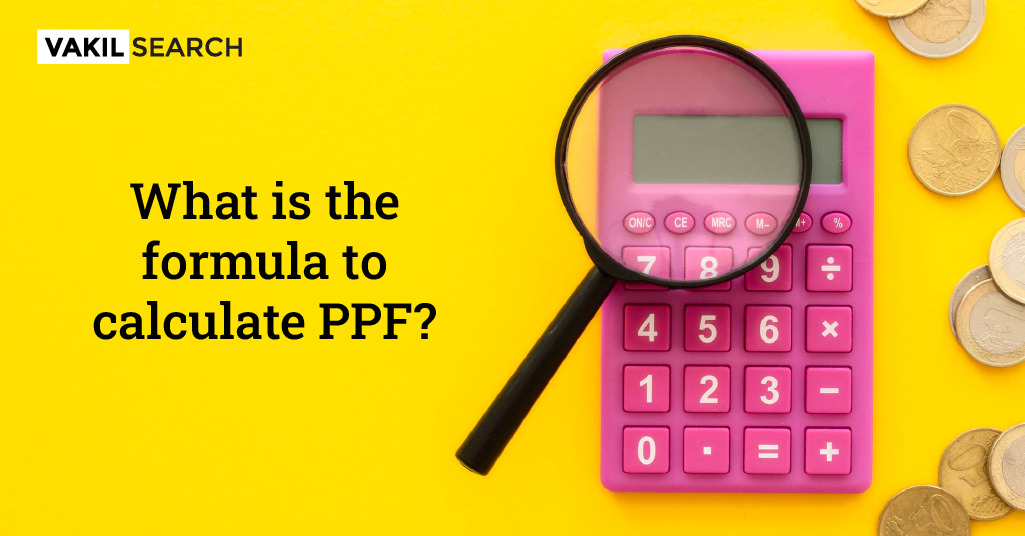Here is the detailed guide on how the PPF amount can get calculated via a formula, keep reading!
The first thing to do to manage your wealth correctly is to start saving money. You will have a wide variety of choices when it comes to savings accounts; however, you should look for those that offer substantial returns with no associated risk. PPF accounts are one of the most prevalent aspects in the picture. A public provident fund account, also known as a PPF account, is a type of investment account designed to help you make the most of your money.
PPF is an excellent choice if you are a recently hired worker or a responsible parent interested in putting money away for the future. determining interest rates and returns on your Personal Pension Fund account becomes more difficult. Utilizing the PPF account calculator will make these otherwise challenging calculations much more straightforward.
How Exactly Will Using A PPF Calculator Benefit You
Using this financial tool, one can resolve any questions or concerns regarding their Public Provident Fund account. When determining the amount of maturity that must be paid after a certain period, there are specific guidelines that must be adhered to at all times. It monitors the increase in your available funds over time. Those who already have a savings account with the PPF know that rates are subject to monthly fluctuations.
Nowadays, it is much simpler to monitor how rates shift over time. Nonetheless, since the invention of the public provident fund calculator, account holders have had a much simpler time determining the monthly changes made to the rate. You may find a lot of user-friendly PPF calculators on the market, and to select trustworthy ones, you should do your research.
Latest PPF Amount Rates
The Personal Retirement Account (PPF) currently provides a rate of 7.10%. After the announcement of the Union Budget 2022, this aspect did not change; consequently, until further notice, the returns on your deposits in the PPF will continue to be calculated at 7.10% on an annual basis.
How Does PPF Work
A Public Provident Fund account can be used as a savings and investment vehicle that reduces tax liability. PPF would make it possible for you to build up a corpus for your retirement while at the same time reducing the amount of annual taxes you owe. The Personal Pension Fund (PPF) is an investment vehicle that falls into the category known as EEE, which stands for “Exempt-exempt-exempt.” Put that another way: Using the online PPF return calculator, you can determine the PPF maturity rate by performing a few straightforward calculations and then calculating the total.
Using the PPF Calculator: What Are the Steps?
Using an online PPF return calculator is a straightforward way to acquire an accurate estimation of how much of a retirement fund you will be able to accumulate over time. The fact that the PPF amount calculator is both easy to use and accurate makes it necessary to test it. To proceed, all that is required of you is to enter the values corresponding to specific columns in the spreadsheet. These are the following:
Click here to know about: PF Registration
How Long Have You had Your Account?
You can enter a number with a minimum of five years and a maximum of ninety-nine years. The frequency of the investment will be once a year.
Amount of the Deposit
Enter the annual contribution sum you intend to make to your Personal Retirement Savings Plan (PPF).
Interest Rate
You can alter the interest rate and get different estimates using this editable field. The current prevalence rate is 7.10%; however, you can adjust the rate as needed.
After you have entered all of the information mentioned above into the PPF maturity calculator, you will be given information on the PPF maturity rate as well as the amount earned.
Compound Interest Calculation Formula for PPF Investments
The calculation method for the PPF is not overly complicated and is based on the concept of compound interest. The formula utilized is A = P(1+r)t, wherein A represents the Total PPF maturity, P represents the principal amount invested, R represents the rate accrued on the PPF account, and T means the investment period.
The Formula That Is Used to Calculate PF
The following equation can be used to compute the amount accrued on a PPF account: F = P[((1+i)n-1)/i]. In this, F stands for the maturity proceeds of the Personal Retirement Account (PPF), P stands for annual instalments, n stands for the number of years, and I stands for the rate divided by 100.
Suppose one wants to get the most out of their PPF investment. In that case, they should make their contributions on or before the 5th of the month if they are contributing every month, and they should make their lump-sum contributions on or before April 5 if they are contributing annually.
The maximum amount that can be invested in a single year is one and a half hundred thousand rupees, while the minimum amount that can be supported is as little as five hundred. As was discussed earlier, one has the option to take out loans against their PPF account beginning after the completion of the third year and continuing through the sixth year.
In this scenario, the maximum amount that can be withdrawn is the lesser of fifty percent of the account balance at the end of the preceding year or fifty percent of the account balance at the end of the fourth year before the year in which the withdrawal option was chosen.
To know more about PPF calculation, get in touch with the professionals at Vakilsearch for the same. The professionals at Vakilsearch are quite experienced in this field. They would help you out at every step of the process irrespective of what legal help you want.
Read More :











